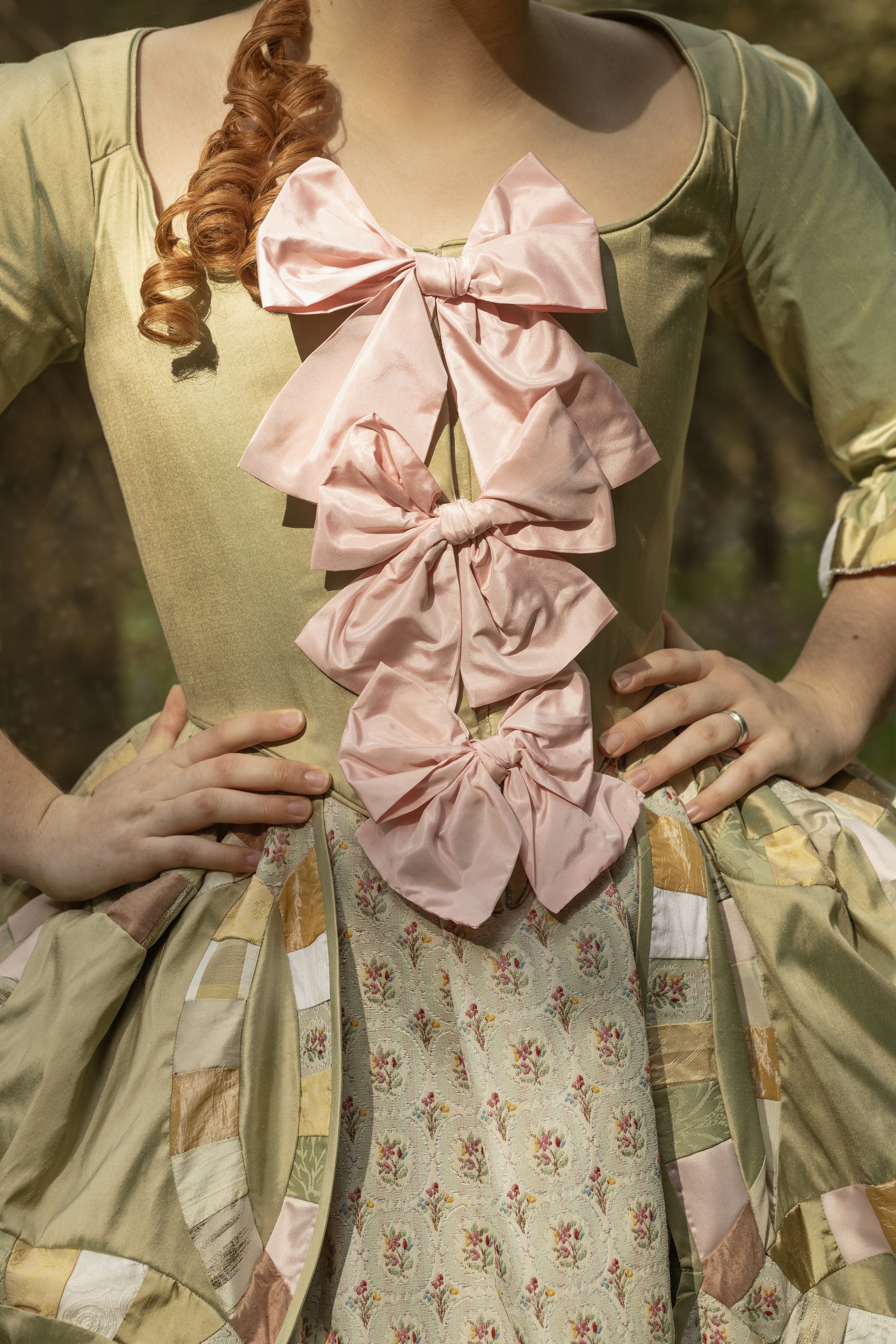
Piece by piece
Piece by piece
By Sylvie Lefebvre
Piece by Piece was made to showcase a patchwork pattern called a ‘Double Wedding Ring’. This type of quilt was traditionally given to newlywed couples upon their nuptials, as the interlocking rings are seen as a symbol of love and romance. The pattern is a visual representation of the two individuals coming together as one.
This dress was inspired by the wedding dress fragment found in the museum’s collection, donated by the family of Mary Davies. This fragment had been pieced together to make the most out of an expensive fabric, letting nothing go to waste. Quilting employs this type of thinking, economically using scraps of fabric to create functional works of art. This dress was designed to fit the styles of the time period of the original wedding dress of Mrs. Davies.
Mary Davies was married on October 3rd 1765, when the height of fashion was robes a l’anglaise and sack-back gowns. This was a time period of excess in every aspect of society. Art did indeed imitate life, with artists like Fragonard depicting scenes of frivolity and opulence, meticulously recording the fashions of rich women. These dresses are easily recognizable by their wide hips, low scooping necklines and multitude of trimmings.
Instead of using excess ruffles, bows and trims to embellish this gown, I decided to use patchwork to embody the feeling of excess of the 18th century. The scalloped edge of the Double Wedding Ring emulates the look of Rococo dresses, without using yards of fabric to create scalloped ruffles. However, each fabric seen in this patchwork was either left over from a previous project at the Arts University Bournemouth, or donated to the project from fellow sewers fabric collections. Not only does this showcase the wonders of repurposing, it brought the community together just like quilts have done for centuries.
Historically, quilts were made by groups of women working in tandem to achieve their goal; this is what’s known as a quilting bee. It is a space where women can work alongside one another, tell stories, share knowledge and resources while completing a task. To be true to the spirit of quilting, I hosted a quilting bee with my peers to create this Double Wedding Ring. In one day we were able to accomplish what would have taken me working by myself, months to create. It is a truth, tested by time, that many hands make light work. I would like to thank Julia Colvard, Fiona Andrew and Natasha Williams for taking part in this time-honoured tradition.
The intricate design of this dress shines a light on one of the many ways that we can make the old new again.


